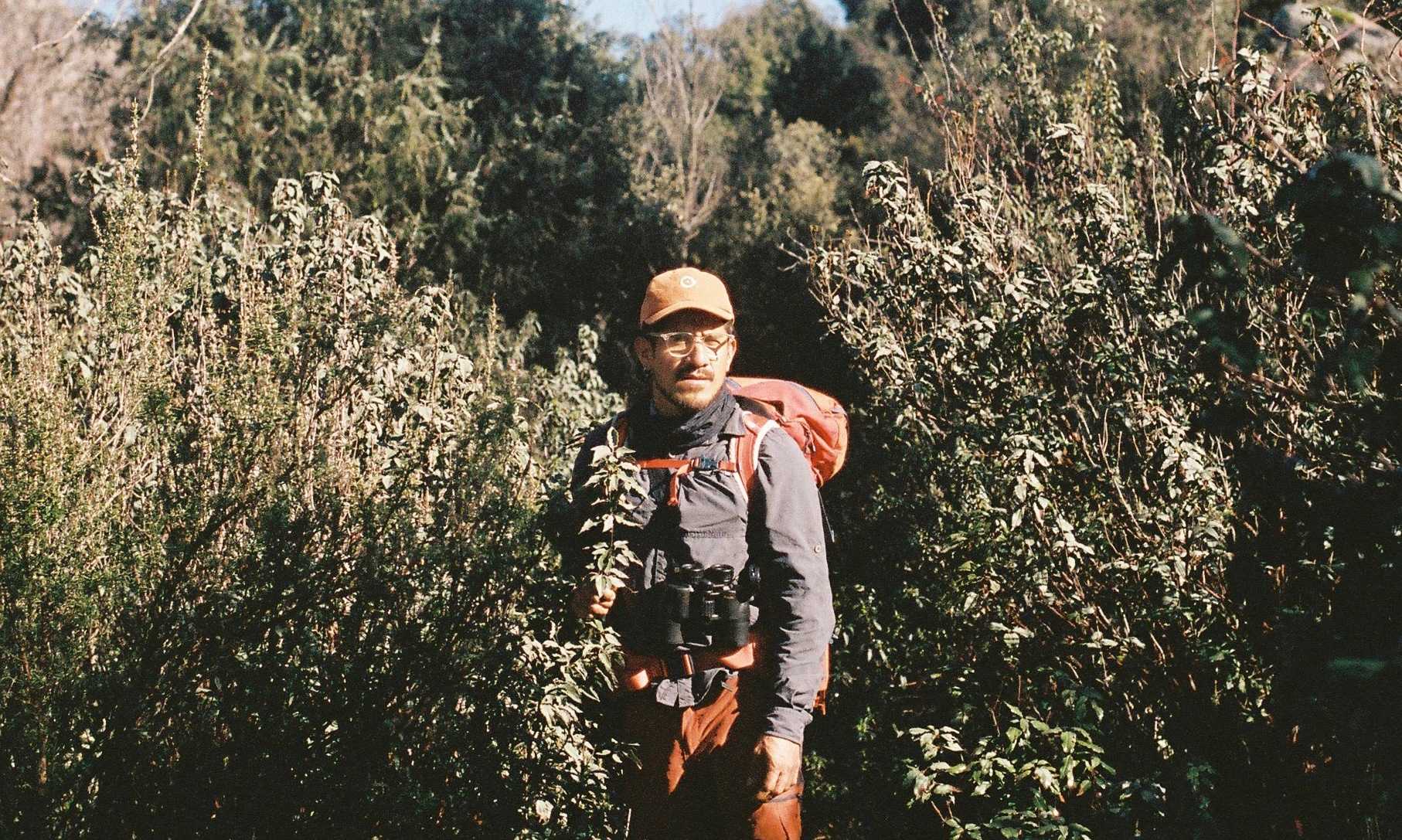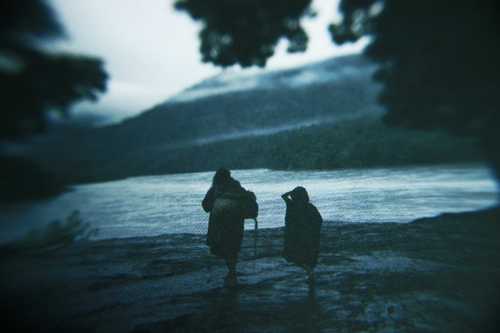
The Ashaninka army’s sonorous weaponry: 1980 –2000
A war that is not over yet.
In the entire history of the Republic of Peru, never before has there occurred such a violent episode of war as in the period of the civil armed conflict between 1980 and 2000. The number of people killed, the length and the economic costs exceed Peru’s most important conflicts in history: the war of independence and the war against Chile.
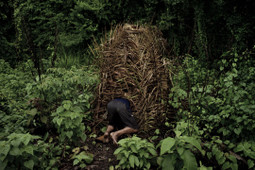
According to the Truth and Reconciliation Commission, 23,969 Peruvians died or disappeared, mostly from rural and indigenous (Andean, Quechua, Amazonian) areas; people with little access to education and on the edge of poverty (CVR, by its acronym in Spanish). This is just a sample of the social impact produced by this chapter in our history, which represents a fragmentation felt to this day.
In this context different types of resistance arose from diverse communities throughout the Peruvian territory. The stories of heroism, victims and perpetrators are difficult to tell, since there are many unsolved cases and the Peruvian population still carries today a vivid memory of the biggest terrorist group, Shining Path (SL by its acronym in Spanish). According to a survey carried out by Ipsos in 2017, 62% of the population believes that SL is still active in the “most remote places”.
One of the most significant cases in the history of resistance to the internal conflict was the one of the Ashaninkas, an indigenous community located in the south-eastern Amazon region of Peru, between the department of Junín and Cerro de Pasco.
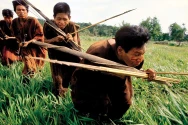
Green power
“Before the start, I dreamed of a black vulture. When you dream of a black vulture, there will be war.”(Ashaninka woman’s testimony after the war)
Several pages could be written about the Ashaninkas, since they have a large number of historical episodes and a little-known culture, which we very much need to understand and reflect on from a Western perspective.
Their close relationship with nature, spirit of freedom and warrior character are the bases of their way of life (Zolezzi, 1994: 15). All of this has made them one of the strongest and most warrior indigenous communities in the Peruvian and Brazilian territory. They knew how to withstand harsh invasions: since the Incas, the scourges of rubber, colonialism, the massacres of terrorism and even now drug trafficking and illegal mining affect a large part of their territory.
Despite their resistance, it should not be forgotten that they lost 22% of their population between 1980 and 2000, a period in which terrorism struck a large number of their community (LUM, 2012). This shows the social impact that the internal armed conflict had, but which, at the same time, showed the effectiveness of their strategies of resistance. Access to their territory was controlled by Shining Path, who divided families, enslaved women and forced children to take up arms. In fact, it was not until 2015 that several children who were imprisoned by some narco-terrorist groups were released. “It is estimated that more than 6,000 Ashaninkas were killed and more than 10,000 were forced to flee. As a result, many communities disappeared” (LUM, 2015).
“When the subversion came, when it entered the Chanchamayo area, we saw how five of our leaders died there. (…) We said that we did not agree, because if you were young, it was mandatory to be on their side; it was forced. If you didn’t allow it, they raped your wife, your grandmother, they killed the children and it was chaos” (Enrique Casanto, Ashaninka).
A turning point occurred in 1989, when the MRTA abducted Alejandro Calderón Espinoza, the president of the federation that brought together the 52 communities of the Pichis Valley, known as ANAP (Apatyawaka Nampitsi Ashaninka). From there, fed up with the incompetence of the State, and with terrorists that were recruiting young people from their ranks, stealing their animals and killing their people, one of the most fascinating human organizations began, where the sound was a key element in their strategy.
An Ashaninka arrived with a rifle, and I said to him: “What are you doing with that? Where do you come from? You should not bring a rifle. We should better pray”. I killed my hen and fed him. Then, more came and I asked them: “Why are you doing this, fellow countrymen?” “We are going to kill the one who has money,” they answered (Alcides Quinchuya Quinchima).
The Ashaninkas decided to organize themselves to defend their territory and formed the “Ashaninca Army” with 2,000 people (Place of Memory, Tolerance and Social Inclusion — LUM, 2015).
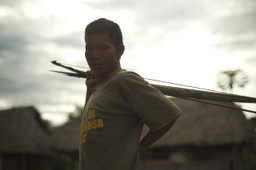
“We said: If five leaders have already died, a strange person cannot lead us with the intention of abusing our people again… We said no, no longer. (…) We took documentation to the Ministry of the Interior and we informed them of our problem and they answered that it was the job of the Army and the National Police to protect us, but we begged them, explaining that they did nothing for us, that they are stationed in La Merced, San Ramón and Satipo, and that we continue to die and they told us: “If you want to confront, confront them; if you die, you die.” And this is how we started. We told the 108 leaders that no one was going to use shotguns, only arrows, and our guides were the young men and women who were stolen by SL and the MRTA. This is how the Army realized that without having studied intelligence… we could also do it”. (Enrique Casanto, Ashaninka)
This is how a war that made headlines in national news began, since it represented a vindication of the warrior spirit of the Ashaninkas and their organizational power. At the same time, it questioned the effectiveness of the State to maintain order in its territory. It was never known exactly how many people were mobilized throughout the territory, but the slogan and the decision had already been made: The Ashaninkas were going for the terrorists who were in their territory.
The power of sound
Sonological competence is the ability to listen to our environment. It was a concept coined by R. Murray Shafer, from which several questions and extensions can be drawn, because it implies a very controversial concept: “listening”, which can be understood as a way of being in the world, being present and connecting with the environment. As its author explained, it refers to the ability to be aware of the ambient sound that welcomes us. This competence should be educated in order to avoid wasting energy, which means reducing noise but, above all, it implies something more profound in respect to our position in this world: to go from being doers to being humans (Wrightson, 2015).
In short, what the author is asking is for us to stop for a moment and go from being doers to being humans. His approach coincidentally has relation to the Ashaninkas’ own sonological competence and their ability to win a war thanks to their connection with nature and their in-depth knowledge of the environment.
When the Ashaninkas were in the middle of the war, they moved throughout their territory surrounding the terrorists, with some shotguns but, above all, with handmade weapons such as spears and arrows, for the men, and “cariba” carried by women. At the same time, they applied a communication strategy that was based on the imitation of sounds of the birds in the area, which the enemies did not recognize as human sounds but that they perceived as part of nature.
In other words, not knowing the area and little awareness of atmospheric sounds were the main reasons why it was difficult for Shining Path to continue to subdue the Ashaninka people. Thus, we can assume that their perception of what a natural or human sound varied, since they were always exposed to firearms, bombs or war cries. The sounds the members of Shining Path supposed to be alert of were not necessarily sounds of birds or nature.
In order to create a language for a war strategy, just as Morse code was at its time, there are many skills required, such as members of the group sharing the same code, to begin with.
The codes the Ashaninkas shared have been built based on their link with nature, since to respect everything that has life — and, for them, everything around them has life — is within their values (Espinosa, 2014).
“Keeping their territory intact, knowing how to relate to their way of life without undergoing changes within their territory … This way of life implies reciprocity between human beings and nature” (Pablo Jacinto, Ashaninka).

Of the people, its sound
The Ashaninka native community, in R. Schafer’s terms, has a HI-FI sound, because it is a pre-industrial space surrounded by a vast forest, animals, rivers and plants yet to be explored. However, its semi-nomadic character not only makes us think of an extensive horizon but also of a fluid space with porous limits that could come into question.
According to Schafer’s terminology, the sounds made by the Ashaninkas to communicate their strategies to each other would be considered “sound signals”, since they had a specific and particular meaning, but, above all, consensual. Meanwhile, for outsiders, the same sounds could fit into the category of “soundmark”, since they only associated them with the immensity of sounds of the thickest jungle. In conclusion, we could say that the acuity with which the Ashaninkas communicated was closely related to their experience and coexistence close to nature. All of this reflects that the sounds that were emitted were naturally intermingled with other sounds of the forest, as if they were part of the same symphony or composition.
In the following link you can hear all the sounds they used as a voice command.
The sounds that imitate birds have the following meaning:
1. There is my fellow countryman
2. There they are gathered, there are several
3. People are alive here
4. People are dead here
5. We are all gathered together
It remains to investigate how these sounds have similarities and coincidences with sounds of other birds and their meaning in the animal world. However, without going that far and referring to a biological scope of this behavior, some biologists suggest that certain plants, when attacked, warn other nearby by launching signals that are carried by the wind, thus allowing the receptors to intensify their defense mechanisms, increasing their toxicity or generating odors that scare away predators (Kobayashi and Yamamura, 2003).
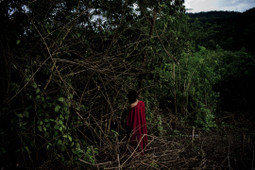
Interestingly, just as certain substances are transported in the air, sound energy can do so, just like plants. For this reason, the Ashaninka army created a series of sounds to also defend itself, thus managing its own language.
In addition, it is possible to state that any sound outside of a communication system would have no greater meaning or relevance. However, although sounds can be a powerful weapon, they also have a degree of fragility, insofar as they can be easily confused, as happens when a group of birds tries to communicate with another group to mate but is interrupted by the sound of a road (Wrightson, 2015).
Conclusions
Finally, the Ashaninkas managed to expel the terrorists from their territory, as evidenced by the many news reports that came out after those bloody episodes. However, to this day the Ashaninka community continues to be a population marginalized by the Peruvian State and in conflict with drug trafficking, among other problems. Their struggle is maintained, as is their culture and their way of making their space their own, as with the imitation of sound and collective creation.
As a conclusion, we could say that the lesson of this story is the relevance of being connected with the environment where we live or visit. It is important to be fully present at the place where we breathe and develop ourselves. In that sense we have a lot to learn from the culture of the jungle communities that have such a close relationship with nature. However, the advancement of environmental speeches and public policies on climate change have no immediate effect on the daily life of our planet. A more phenomenological and — why not — community approach of sound could give us more ideas of what we should improve in the acoustics of our environment and, therefore, in our lives.
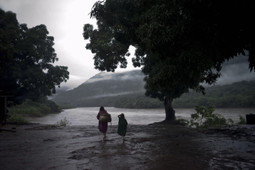
Bibliography
- ZOLEZZI, Enrique Rojas. Los Ashaninka: Un pueblo tras el bosque. Contribución a la etnología de los Campa de la Selva Central. Lima : Pontifícia Universidade Católica dDel Peru, 1994.
- WRIGHTSON, Kendall. Estudio de Música Electroacústica. https://www.eumus.edu.uy/eme/ps/txt/wrightson.html
- Comisión de la Verdad y Reconciliación. Informe Final. Lima: CVR, 2003.
- Los pueblos ashaninka, kakinte, nomatsigenga y yanesha Serie Nuestros pueblos indígenas N° 1
- Videos: http://www.lum.cultura.pe/visita360
Featured photo by Raffa Giordan
Article republished on earth.fm with permission from the author.
Earth.fm is a completely free streaming service of 1000+ nature sounds from around the world, offering natural soundscapes and guided meditations for people who wish to listen to nature, relax, and become more connected. Launched in 2022, Earth.fm is a non-profit and a 1% for the Planet Environmental Partner.
Check out our recordings of nature ambience from sound recordists and artists spanning the globe, our thematic playlists of immersive soundscapes and our Wind Is the Original Radio podcast.
You can join the Earth.fm family by signing up for our newsletter of weekly inspiration for your precious ears, or become a member to enjoy the extra Earth.fm features and goodies and support us on our mission.
Subscription fees contribute to growing our library of authentic nature sounds, research into topics like noise pollution and the connection between nature and mental wellbeing, as well as funding grants that support emerging nature sound recordists from underprivileged communities.

